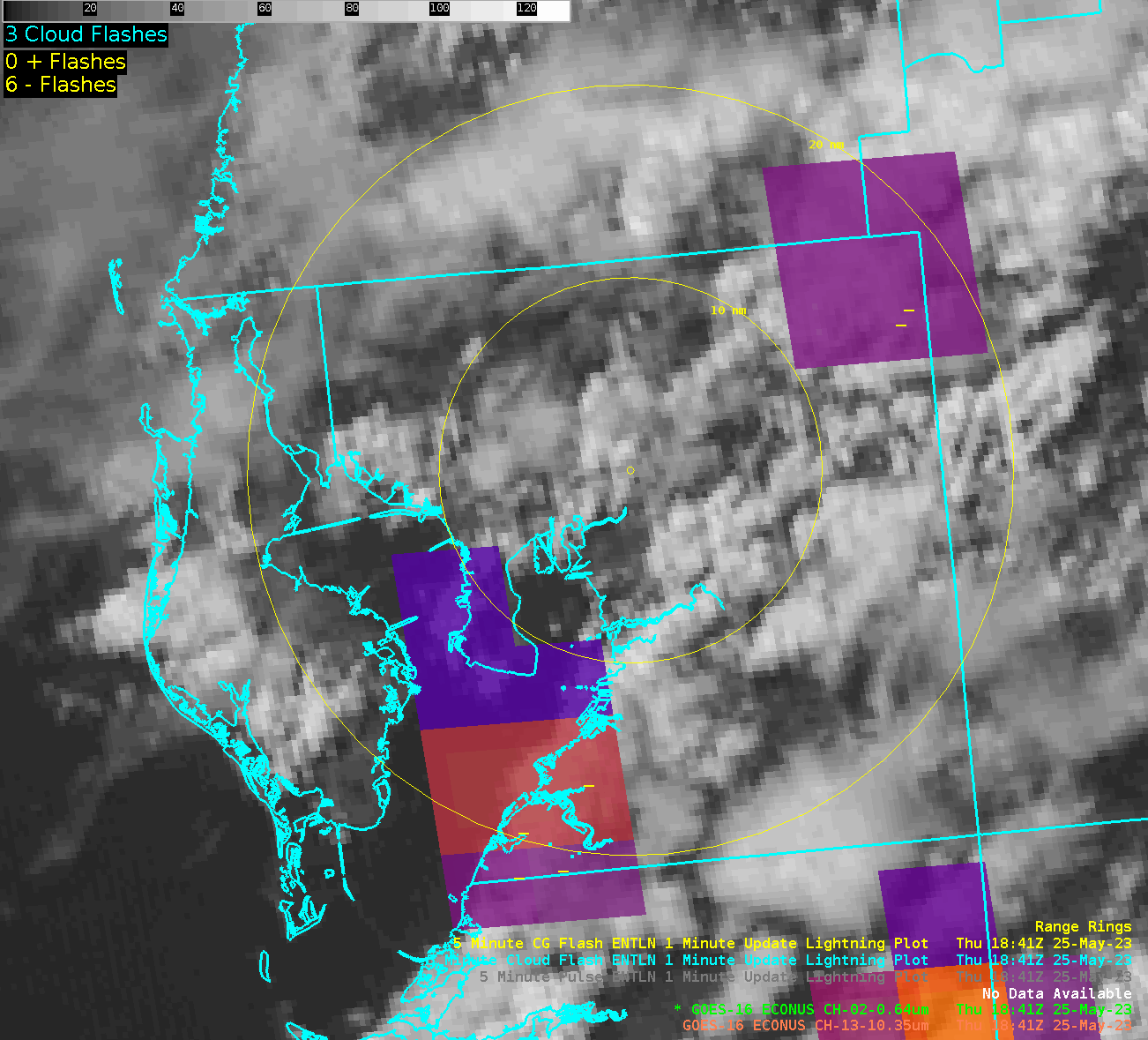We discussed how we would handle warning this cluster of storms around 20:30Z Mon 19-May-2025, whether we would do one big SVR warning encompassing the whole cluster or concentrate into individual storms with different hail sizes and/or wind speeds. If I was warning this and saw a similar presentation in the radar for both clusters, I would begin with a larger SVR encompassing both storms.
The satellite product I use most often for cloud top cooling/warming for diagnosing convection growth is the Ch 13 IR. By using Ch 13 IR satellite and GLM Flash Extent Density, that helped me determine which updraft was the strongest and/or tallest. The overshooting top visible in the bottom left corner with the northern storm cluster suggests a quickly growing updraft that may start to produce large hail (and/or damaging winds) soon given the lapse rates and the explosive environment. Corroborating this with GLM FED and discussing with the group, we also came to the conclusion that the southern cluster of storms is probably broader but not as strong given its broader but less concentrated lightning presence, and might even be weakening below severe limits. With this information, I would have probably SVSed my warning to only include the rapidly growing northern cluster and maybe upping the hail size.
GREMLIN also tends to agree that they start off with relatively similar intensities, but eventually the northern storms take precedence. Using all four of these products together from the start to finish of the storms’ lifecycle would inform my warning decisions for initial issuance, SVSing, and eventual EXPing or reissuing downstream.
4 Panel loop below.
Loop of GREMLIN (top right), Composite Reflectivity (top right), Ch 13 IR (bottom left), GLM FED (bottom right)
- millibar
















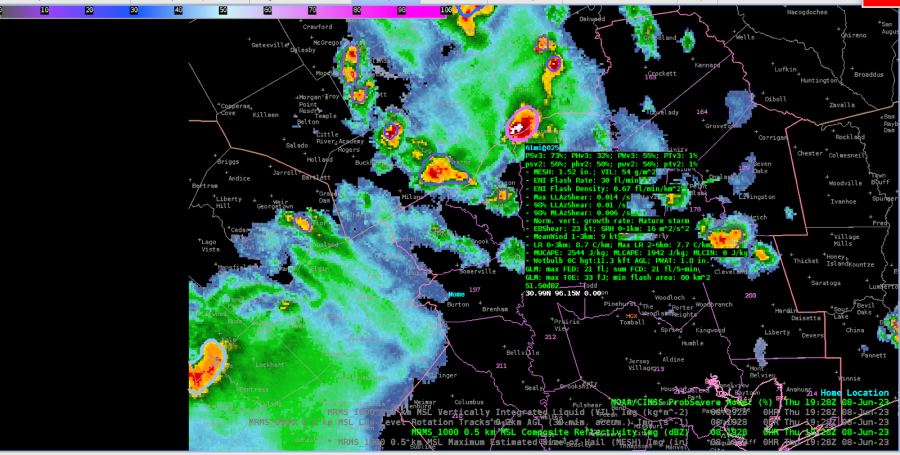

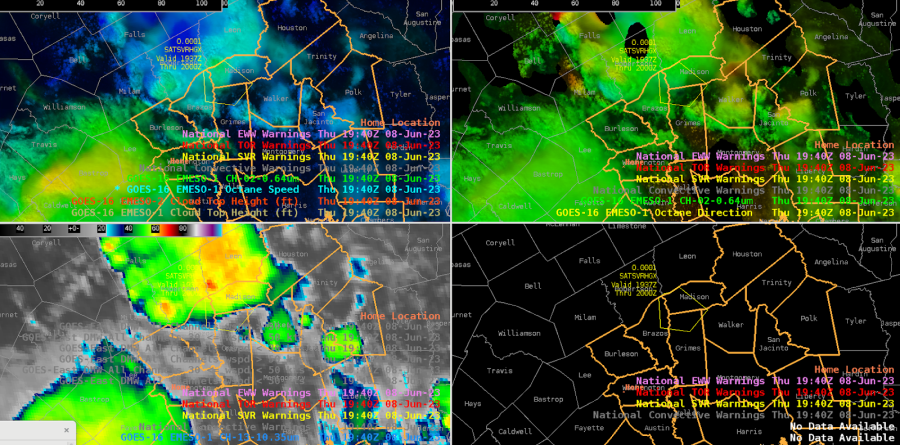
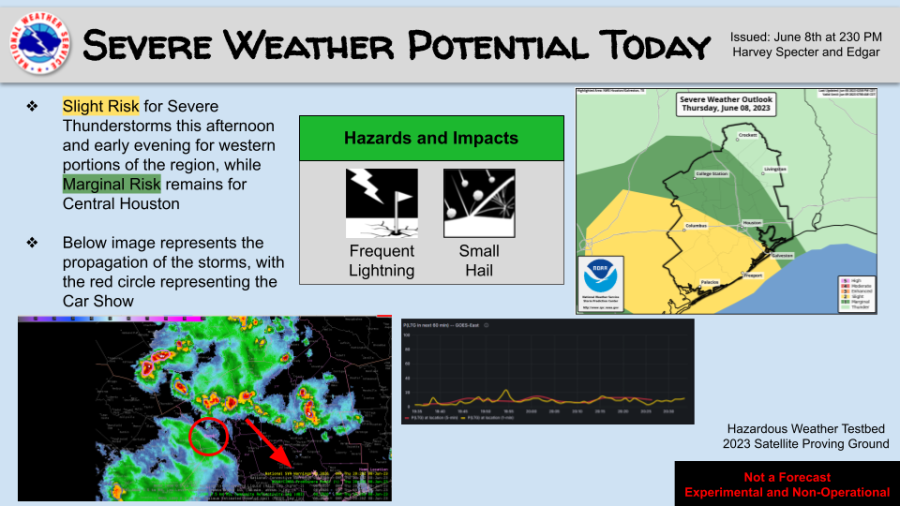
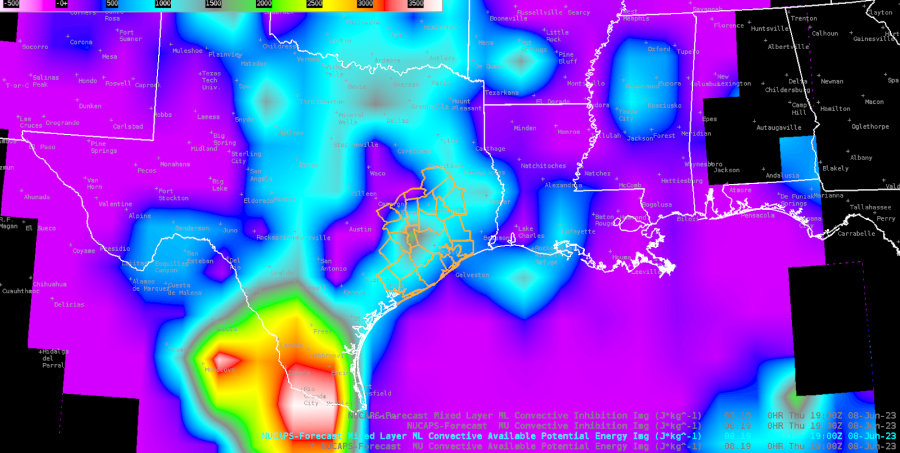

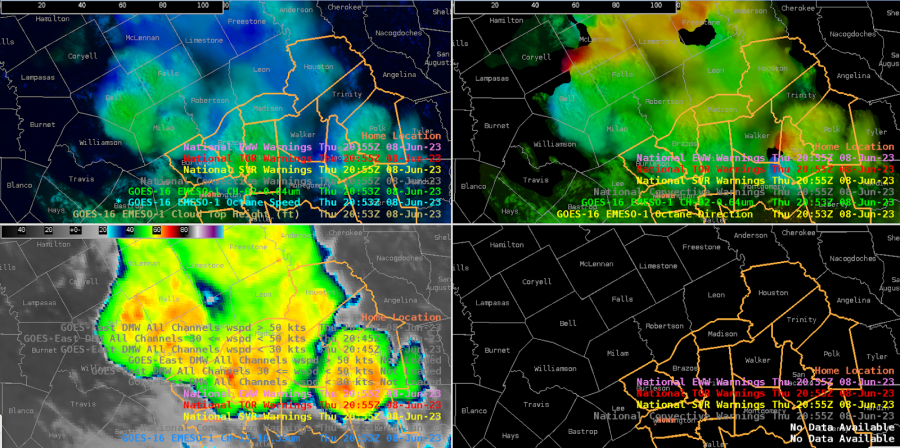
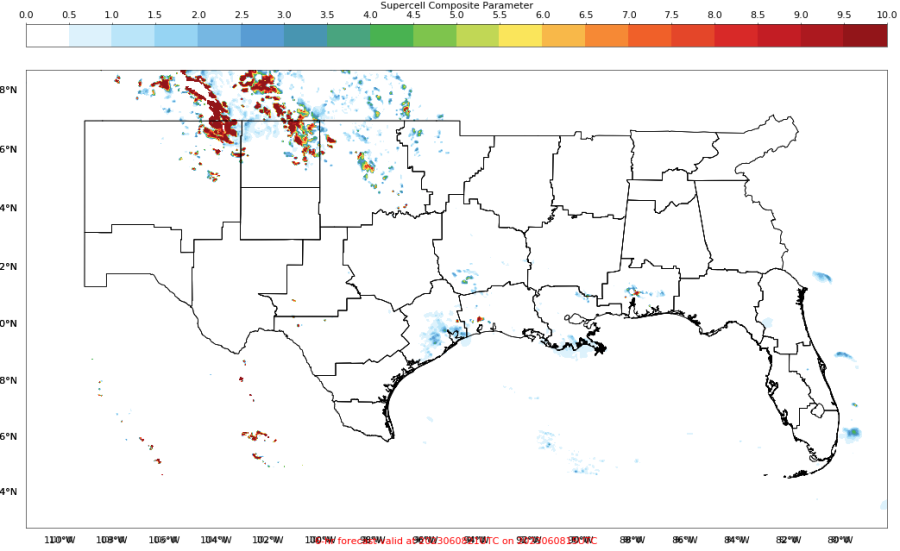
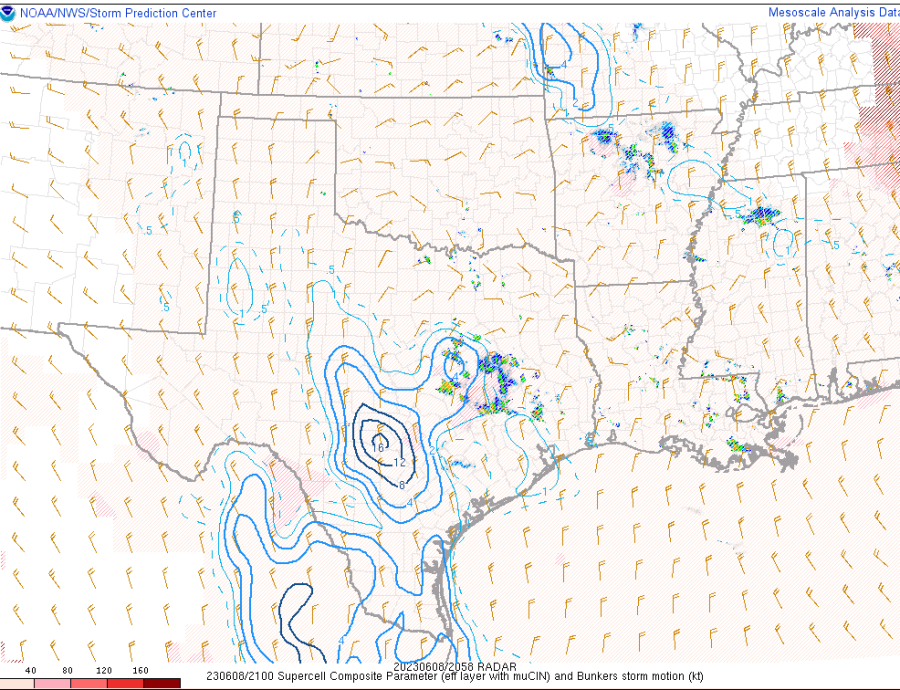
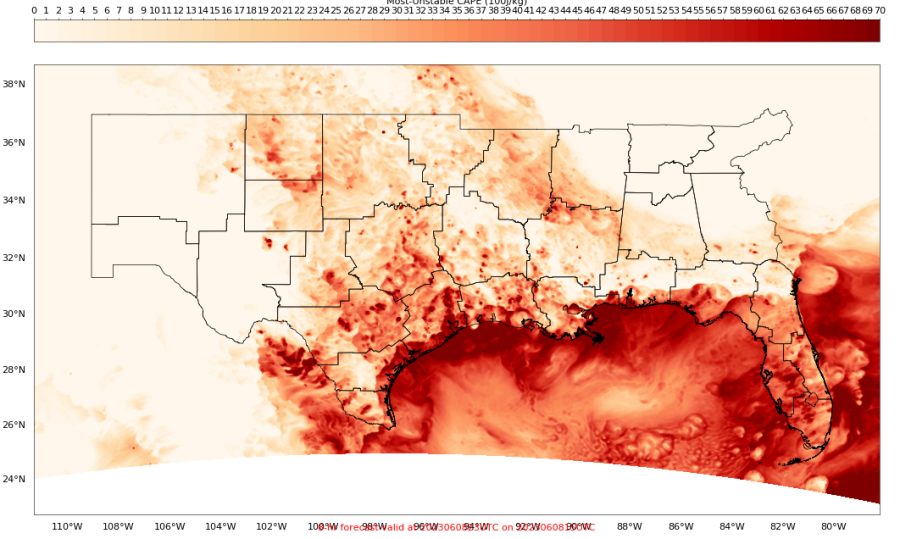
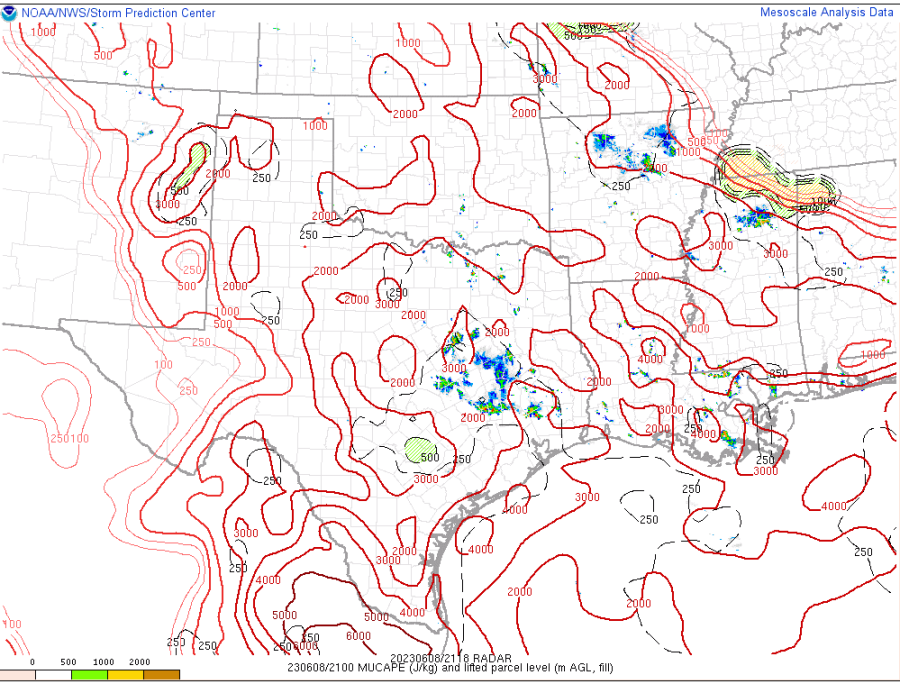
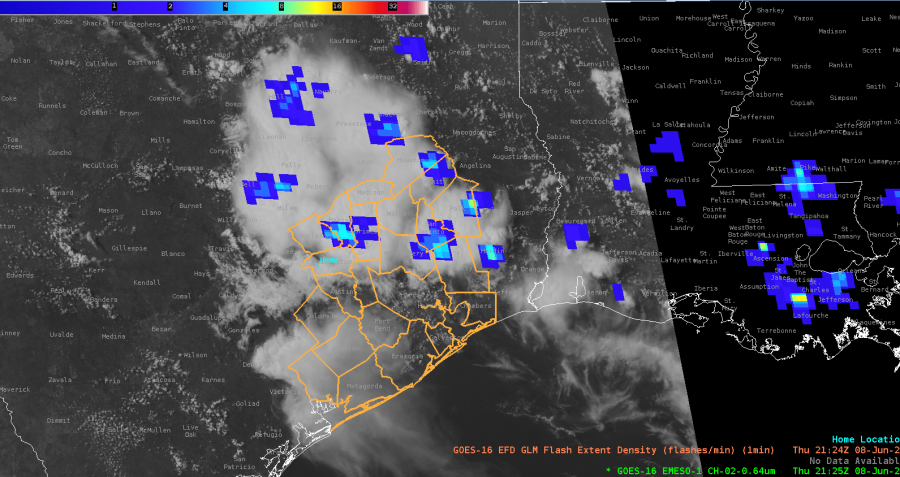
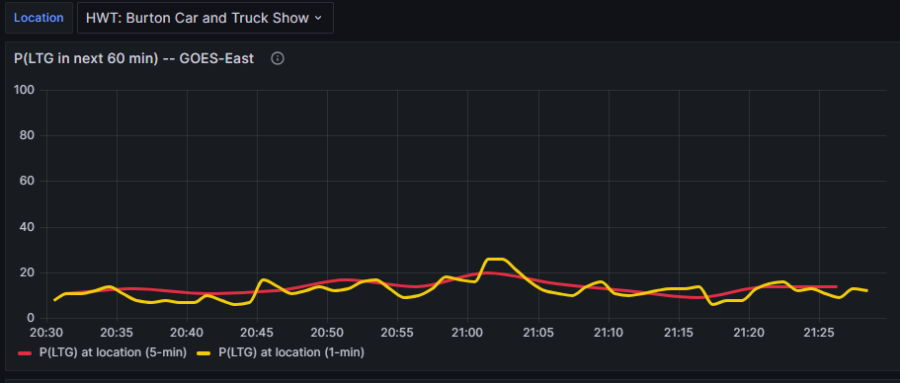
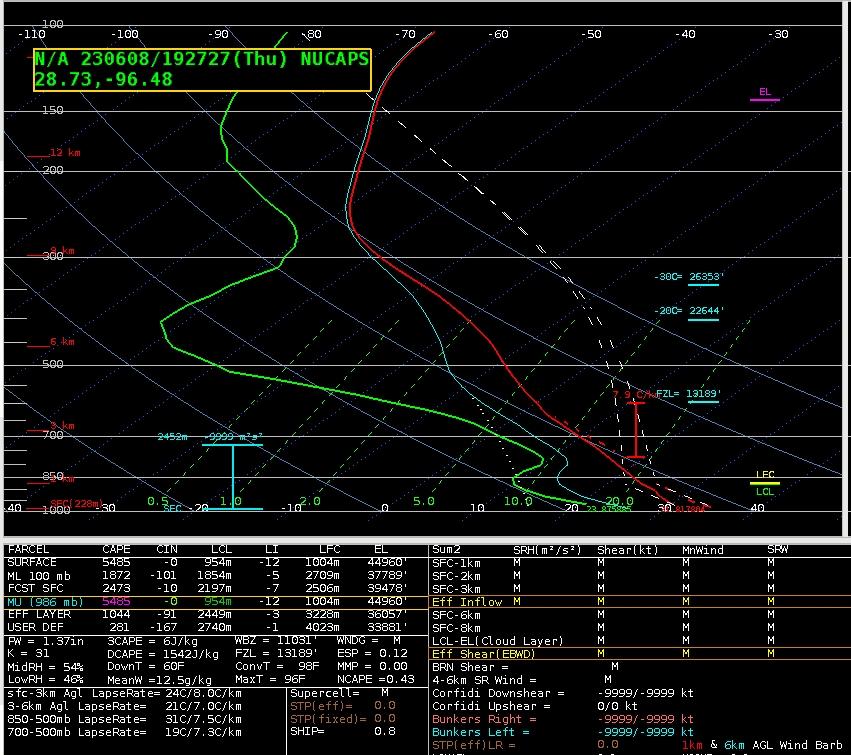
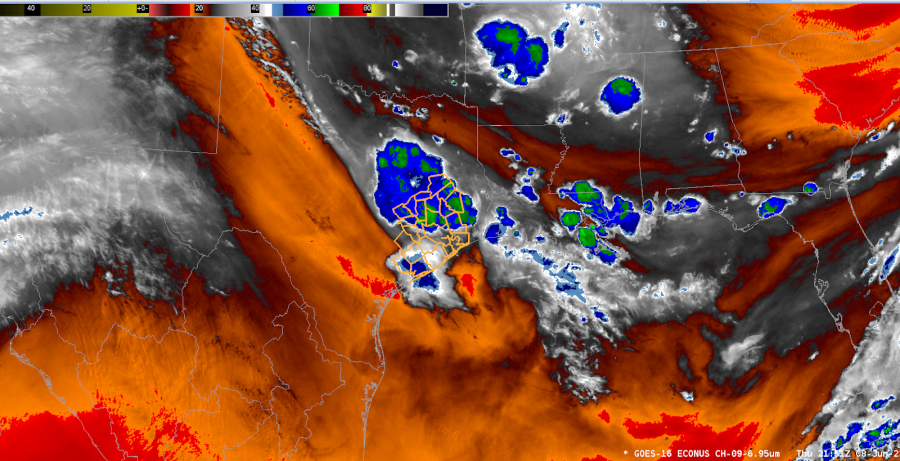
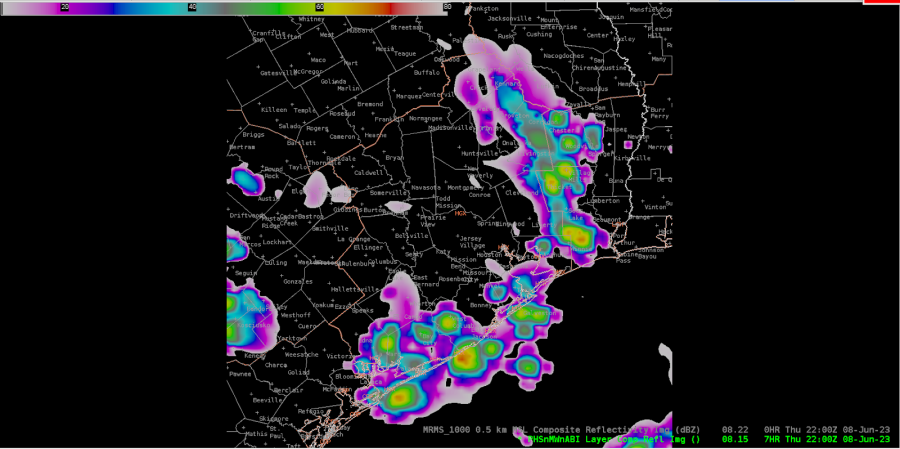
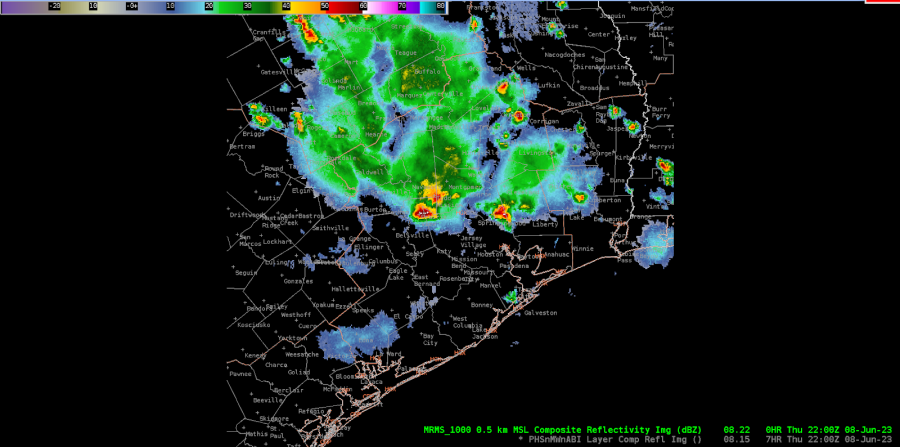
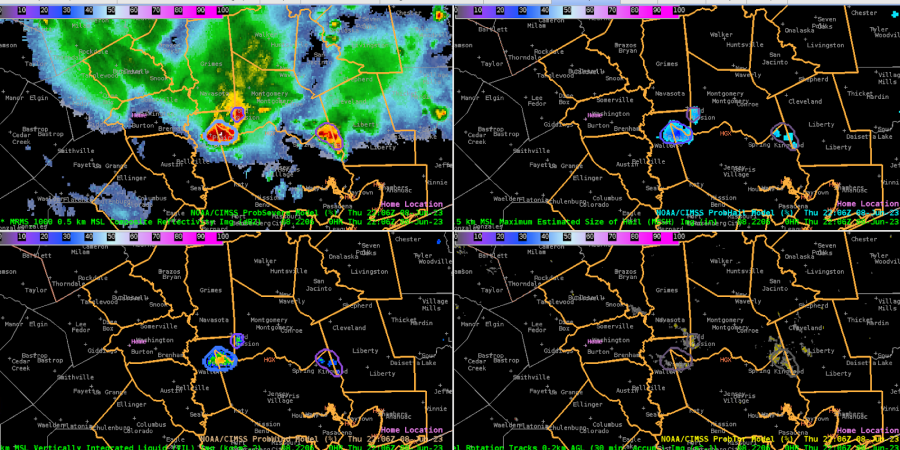
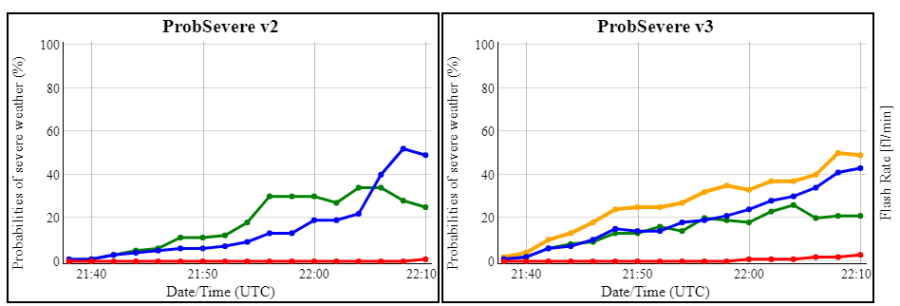
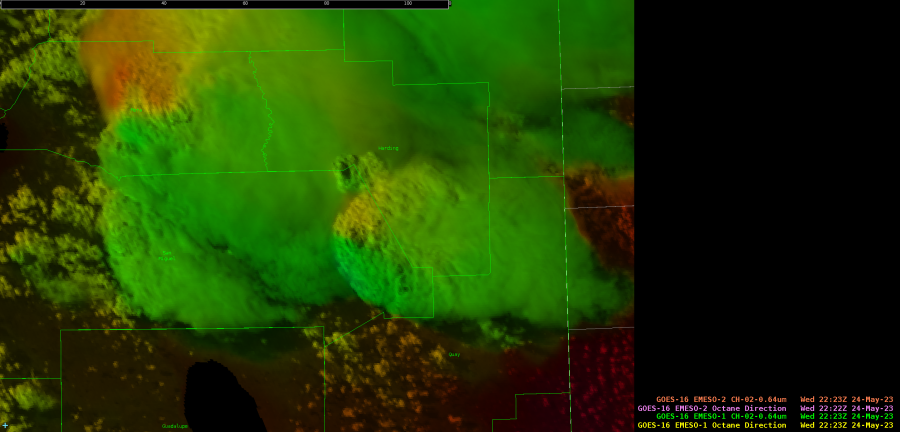 GOES-16 Octane Direction.
GOES-16 Octane Direction. 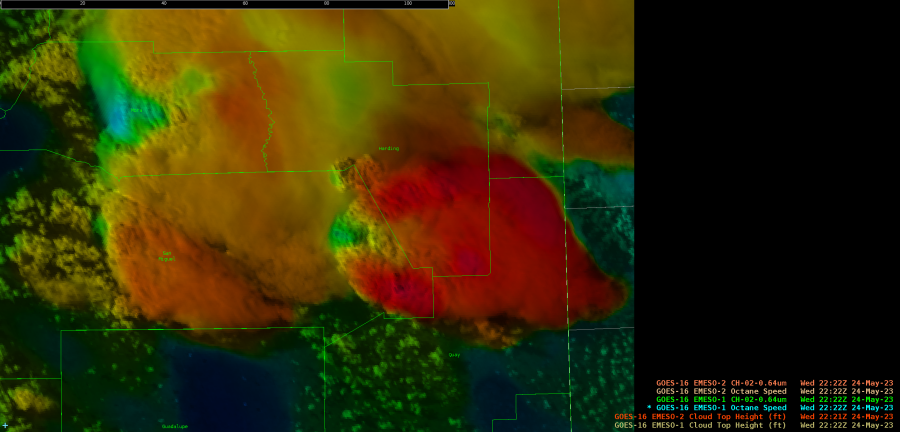
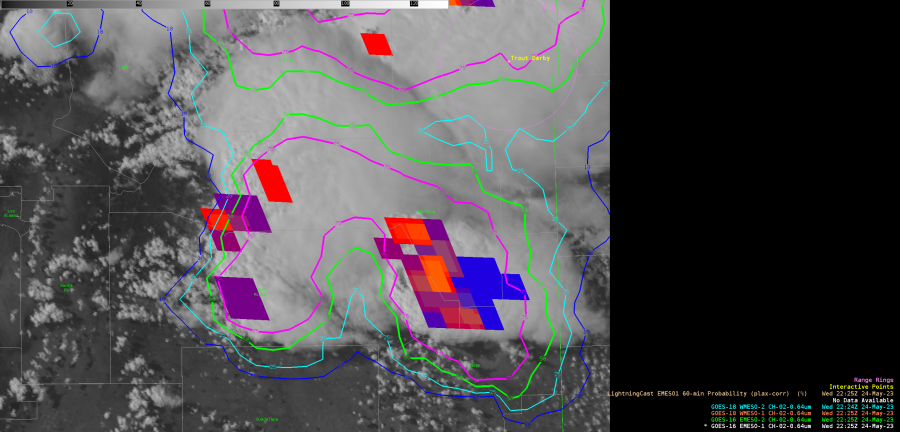
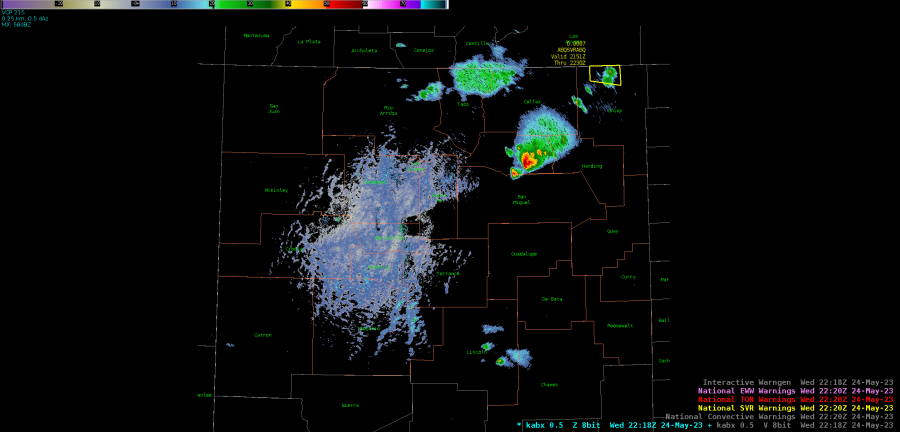
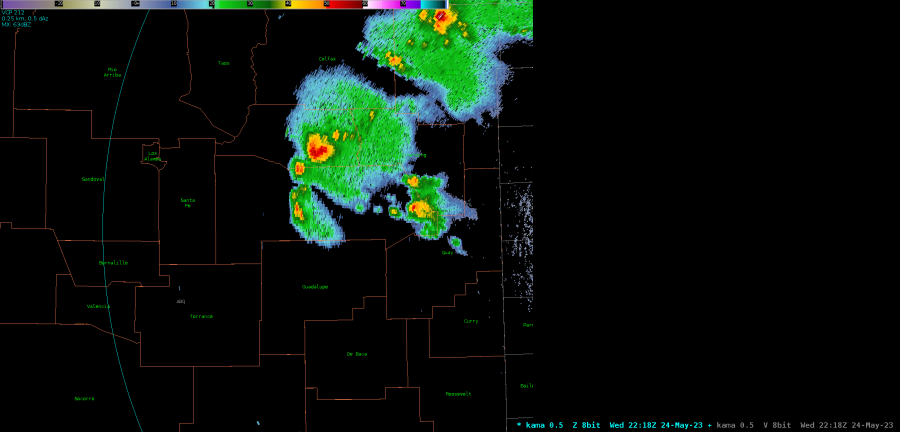
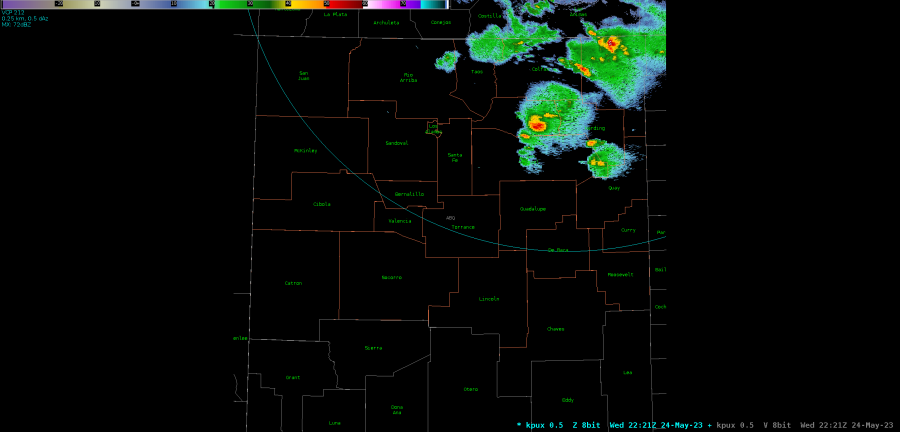 KPUX 0.5 degree reflectivity.
KPUX 0.5 degree reflectivity.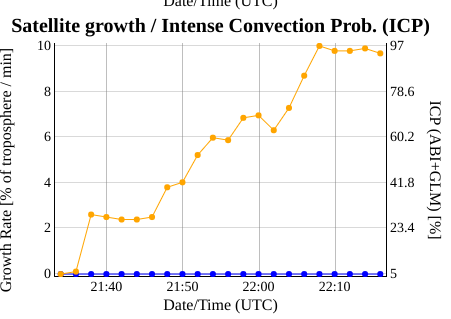 _
_
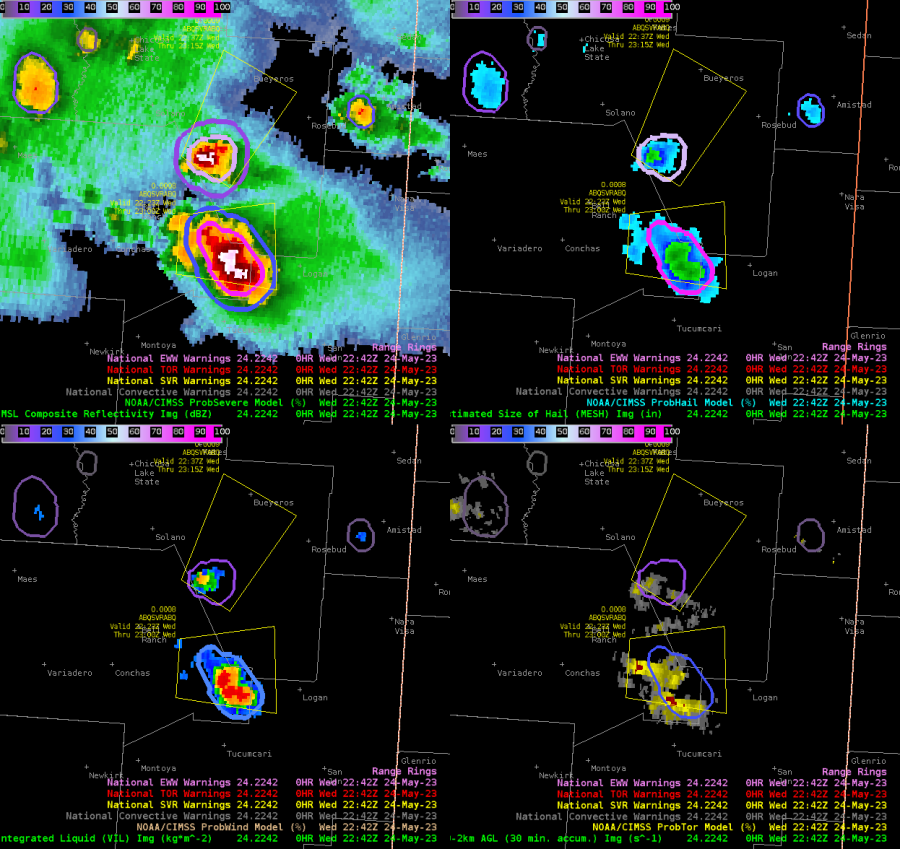
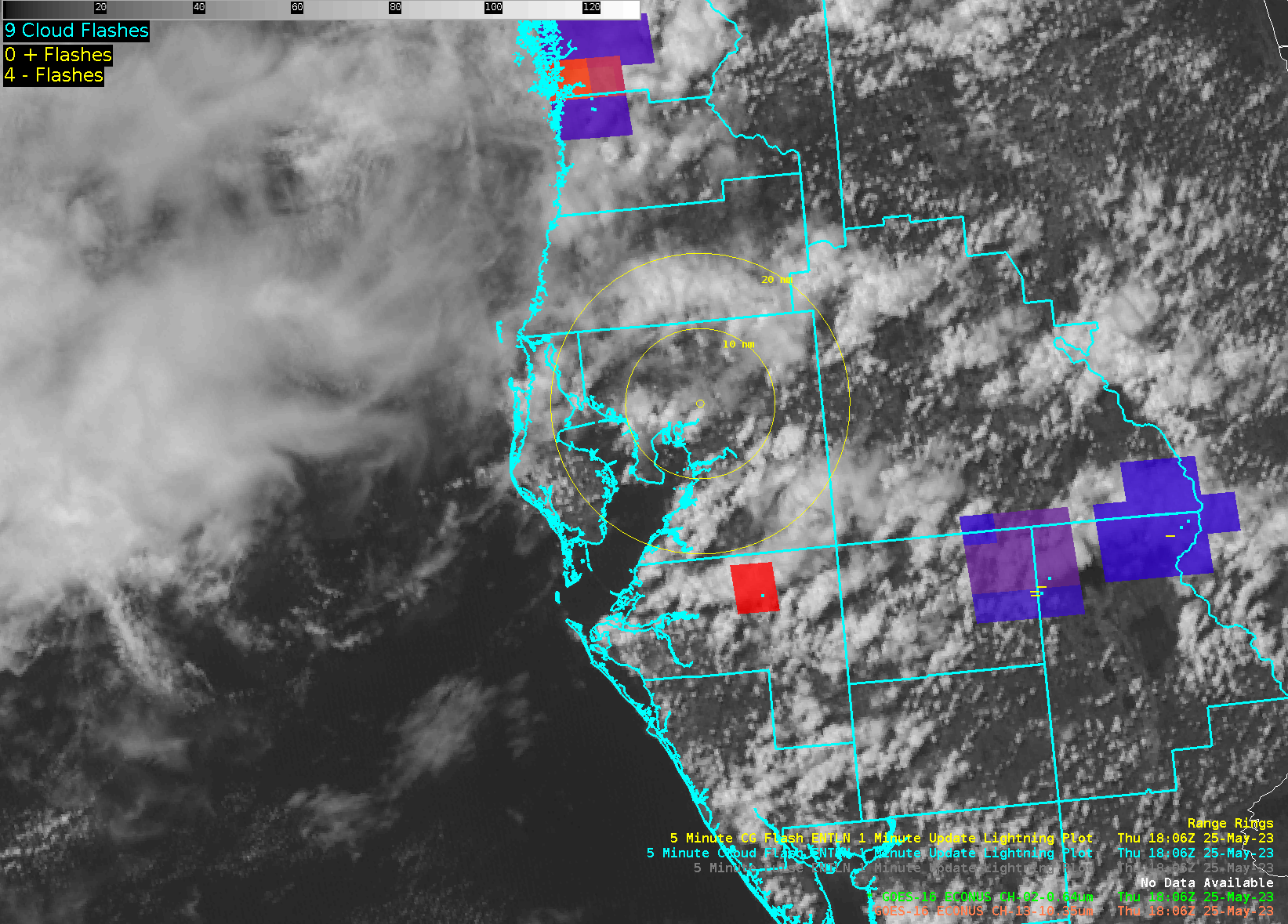
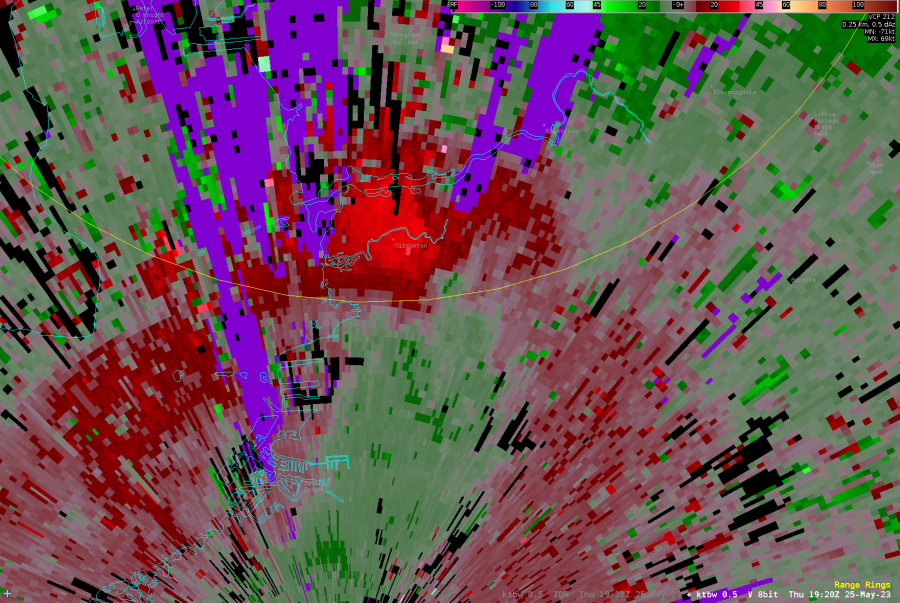 track a developing storm near the Florida State Fair
track a developing storm near the Florida State Fair